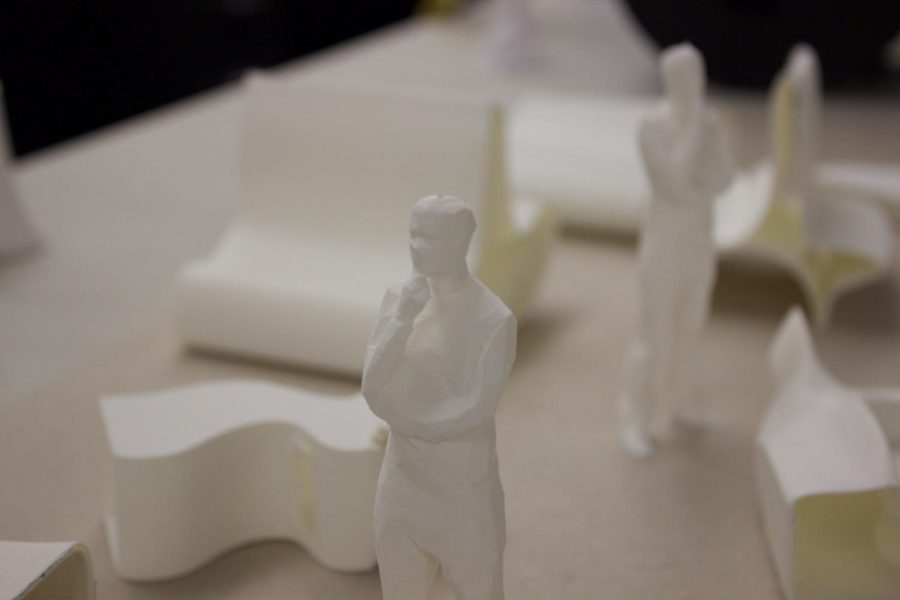3D printer use gaining popularity
3D printers on campus have a large interest with students, but collaboration needs help according to those involved. April 24. 2017
April 29, 2017
Inside a box and on sheet of glass, a mechanical arm prints layer after layer. About an hour later, a small figurine rests on the glass — all thanks to a 3D printer.
While 3D printing has taken off among students, many professionals are still concerned about the technology’s potential.
“To get good at creating a 3D object, you need to think like a 3D printer,” said computer science major Tyler Stiffler. “Architecture students probably do the best work. The more often you familiarize yourself with something, then the more likely you would be better at it.”
People do not need to design their own product, however, as the community online has steadily grown. For example, users have the option to use Thingiverse, which is a website that has a wider variety of item designs available for free.
Working in the Digital Print and Fabrication labs in Taylor Hall, Stiffler was able to see the process transition from idea, to design, and eventually to final product on a daily basis.
A smaller printer exists with the fashion department — an Afinia. It is typically used for creating necklaces, pendants and other smaller creations.
TechStyleLAB director Kevin Wolfgang said the Afinia is cheaper and more powerful than other machines available in the building, like the sewing machine, body scanner and the laser cutter.
Unlike the Maker models used in the library or the Schwartz Center, the Afinia only uses one spool of plastic at a time. This means the product is only one color instead of two.
“There was a guy a week ago who found a necklace he liked off of Thingiverse,” Wolfgang said. “With our limited resources, an all white plastic is easy to be painted on, so he made it work.”
The lack of resources, or even abundance of them, is a recurring theme between all three locations.
Hilary Kennedy, manager of the Student Multimedia Studio, said she wishes they had more than two 3D printers to deal with the high demand.
“Last year, (our) first semester, we had over 200 orders,” Kennedy said. “The second semester, we had over 400. The popularity isn’t going away, especially since now we are getting a lot more designs, not just downloaded from the internet.”
The architecture printers could assist in shortening the wait list, Stiffler said.
“(They) would love if fashion and computer science people came to use our 3D printers more often,” Stiffler said. “I don’t think there is enough interdepartmental interaction.”
Every year, all three departments participate in the Kent State Hack-a-Thon and Mini Maker Faire.
Not many familiarize themselves with the printers located in Schwartz or the fashion building if they are not part of the programs.
“We charge $0.80 an ounce here,” Wolfgang said. “It goes toward purchasing more (plastics) to print with.”
However, not many fashion students print objects. For many, trying to think of a product is difficult since the technology is newer.
“A friend told me once that there’s a certain pain threshold to reach to get people to be engaged in something,” Wolfgang said. “Unlike other colleges, like at University of Georgia or other engineering schools, we are inclusive in regards to who these printers are available to. The designer of 3D images is constant at those schools, their minds are always working, but here, many need to stop and think of what they need next.”
As for now, all the TechStyleLAB can do is keep creating and hope more come.
“There aren’t programs here that bridge together soft design and hard design,” Wolfgang said. “Maybe in a few years we will see more 3D software being taught in non-3D software majors.”
Troy Lee is the military reporter, contact him at [email protected].












